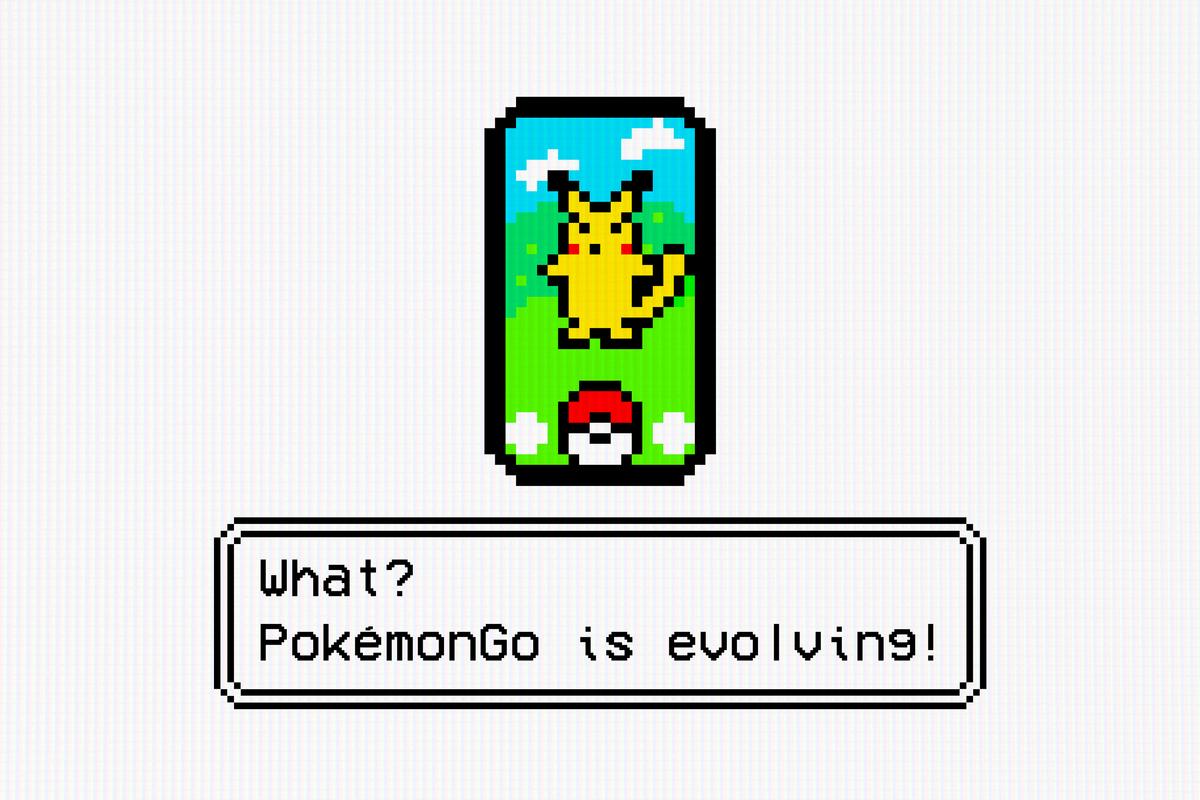Five Years Later, ‘Pokémon Go’ Is Still a Sensation (No, Really)
Long after the first crowds dissipated, Niantic’s game is setting user and profit records and has inspired a community of die-hard fans
You can always tell when someone’s going to say it. Maybe they catch a glimpse of a red-and-white ball on your phone screen. Maybe they hear you slip up and count kilometers instead of miles. Maybe they witness a run-in with a stranger known to you only as PokeDad082798279833, who cryptically mentions something about becoming “ultra friends” as you turn scarlet.
Then they furrow their eyebrows. “Wait,” they say. “You’re still playing Pokémon Go?”
As it happens, five years after the app’s blockbuster release, a whole lot of people are doing just that. Perhaps you count yourself among the 500 million who downloaded the game back in the summer of 2016 and spent whole giddy days chasing Electabuzzes and Charmeleons before hanging up your trainer cap for good.
But Pokémon Go did not go away when the roving hordes of Pidgey chasers did. On the contrary: While the days of honest-to-Willow stampedes in Central Park at the sight of a Vaporeon might have come and gone, the game remains a sensation. Parent company Niantic, which does not make player statistics or revenue figures public, says that the game has now been downloaded more than 1 billion times. Not even the pandemic could shake the game’s status. In spite of being explicitly designed for venturing outside and meeting up with other players (two activities that are decidedly not shutdown-friendly), a handful of tweaks, like enabling players to pick up items and battle monsters from greater distances, fueled a Pokémon Go resurgence: Monthly active users grew 15 percent through the first five months of this year, while spending spiked 49 percent, according to app analyst Sensor Tower; the firm also says that 2020 was the game’s most profitable year yet.
Yes, dear reader, I’m still playing, too—still cursing when Pikachus break out of excellent throws; still slipping and sliding on icy mornings as I shuffle off to catch a rare snowflake. My Raichus now sport no fewer than 11 different silly hats. I got the weird sheep thing, and paid actual money—money that I earned at my job, and with which I might have invested in the future or bought a doughnut or something—for a special add-on that makes my avatar stand in a funny mime pose. Once, I met a stranger on the street to trade for a rare turtle, and if anyone has any leads on small Rattatas or giant Magikarps, I’m interested.
This is the way that I live my life now, which means that I get asked that same old question somewhat more than rarely. (I can confirm that PokeDad is lovely, and that his PokeChildren are orders of magnitude less interested in the game than he and his PokeWife.) To those who wonder about the dozens (of dozens of dozens!) of us who’ve stuck around, I can at least say that Pokémon Go is a much better game in 2021 than it was in 2016. Players can now battle one another live, fight Team Rocket, join together to take down high-level Pokémon that appear in local gyms, and send gifts to far-flung Pokéfriends. The game grew out of its early glitches; real-world weather and seasons now affect gameplay, and dreamy scenery is gradually replacing the flat blue-green map of old. In terms of popularity, it isn’t quite what it once was, but, well, who among us is?
When Michael Steranka first joined Niantic, Pokémon Go had been out in the wild for about nine months. He was one of the first group of new hires brought in after the initial hurricane of interest had subsided. That first burst, he says, was the result of “a perfect storm”: a potent mix of nostalgia for the Pokémon franchise, the novelty of the game’s augmented reality features, and a level of simplicity that made it accessible to users who might not otherwise have identified as gamers.
Steranka, who now serves as Pokémon Go’s director of product marketing, was among those tasked with figuring out what came next. “Our challenge was making sure the players that stuck around didn’t feel like this was something that was going to be going away,” he says.
If there is a goal to Pokémon Go—or, indeed, to any Pokémon game—it is the catchphrase laid out in the opening credits of the anime: “Gotta catch ’em all.” More than 20 years after the first Game Boy game debuted, “all” has become a moving target as subsequent games have introduced new generations of Pokémon. 2019’s Sword and Shield introduced the latest batch of critters, Generation VIII, which brings the grand total of extant Pokémon to a whopping 898.
Within Niantic, these later generations pose something of a riddle: If a player actually managed to catch ’em all, it might amount to beating the game and end their time playing. To counter this, Niantic has staggered the rollout of Pokémon within Pokémon Go, slowly releasing partial generations and holding back some of the rarer and more coveted finds. The first members of Generation II debuted five months after the game first launched; Mew, the final member of Generation I, didn’t make it into Pokémon Go until March 2018. At present, approximately 700 Pokémon exist in Pokémon Go, though many can be caught only in select international locales: An icy squirrel called Pachirisu appears only in parts of northern Canada, Russia, and Alaska, making it a highly sought-after trading chip despite its relative uselessness within the game.
“The lowest common denominator is folks who are looking to just complete their Pokédex, and that’s their ultimate goal in the game,” Steranka concedes. But this, he says, is where all those new features come in. In the summer of 2016, Pokémon Go’s gameplay offerings—find and catch new Pokémon, pick up items at Pokéstops, and button-mash your Pokémon into vaunted places atop local Pokémon gyms—encouraged little beyond collection. More recent innovations offer a bevy of alternative goals: to level up Pokémon, to catch stronger versions (or rare, “shiny” colors) of already caught Pokémon, and to win the most battles with fellow players. The game’s elite players often create contests of their own: Steranka tells me proudly that he recently hit no. 4 worldwide in Pokémon Go’s battle rankings, a feat he confesses took “an embarrassing amount of time.” Beyond the confines of the game, such accomplishments offer no reward greater than bragging rights.
In the Netherlands, a popular trainer named Gio (he asked not to have his last name published) streams his conquests under the nickname Reversal and recently documented his setting of what he says is the record for most Pokémon ever caught in a single month: 91,337, battling weather and blisters along the way. His videos of the record pursuit featured him strolling placidly through the small city of Arnhem where he lives and dodging non-players: “All these freaking NPCs in this city!” he exclaims in one video. “That’s what I call people that are just aimlessly walking around doing their shopping.”
For Gio, 31, Pokémon Go is a full-time thing: Depending on whether he has planned a livestream, he says he plays anywhere between three to 10 hours every day. “It basically makes me a professional Pokémon Go trainer,” he says. Like many a millennial, he grew up a Pokémon fan. “I owned a copy of Pokémon Blue, collected the cards, and watched the anime on TV. It was around my teens when I kind of lost interest in collecting and playing every Pokémon game because it wasn’t really ‘cool’ anymore.”
That changed in September 2015, when he saw the first trailer for Pokémon Go. “Imagine Pokémon in the real world,” the ad implored. Gio installed the game as soon as it was released. “It was like a time machine that brought me back to my 11-year-old self,” he says. The streaming part felt natural, and Gio quickly brought in an audience as eager to reminisce as he was. In the years since, he has traveled the world attending official Pokémon Go events: ones in Japan, Singapore, Germany, Denmark, elsewhere in the Netherlands, Chicago, Philadelphia, New York, and San Francisco, meeting his fans and other streamers and creators like himself.
Pokémon Go, after all, is an inherently social game. As its features have expanded, it has also become an increasingly complicated one, and players have formed communities dedicated to the latest Pokémon Go news. On Reddit, the Silph Road subreddit boasts nearly 700,000 subscribers; when new features roll out, users take it upon themselves to pool tens of thousands of encounters to determine the exact probabilities of desirable outcomes like rare spawns.
Richie Chan didn’t think much of Pokémon Go when he first installed it—until later in the day when all his friends could talk about was where to catch Pokémon. “An hour later, I was in a car and shouting out Pokémon we sighted,” Chan says.
Chan launched Leek Duck (a reference to the Pokémon Farfetch’d) in the spring of 2017, hoping to create a hub of Pokémon Go–inspired travel guides around his home in New York City. Instead, he began a minor empire and became one of the go-to newsmakers and analysts of the Go universe. Visitors to his site can find the latest on Ditto disguises and graphics laying out the latest challenges. Chan has become a part of a loose global network of influencers deployed by Niantic, which helps local pods of players to organize in-person meetups. In 2017, Chan won a Pokémon Go sweepstakes and took three friends on an all-expense-paid trip to Yokohama, Japan, for the annual Pikachu Outbreak festival. (It is precisely what it sounds like.)
“I actually think if it wasn’t for this experience, I might not have continued to work on Leek Duck,” he says. “I saw firsthand how this game brought so many people together and brought so much excitement even a year after its release. It really motivated me to try to contribute to this game however I could.” (He also became one of the first people in the world to snag a Mewtwo, which didn’t hurt.)
For all its success, however, Pokémon Go remains an outlier for Niantic. In 2020, the game accounted for a reported 85 percent of the company’s revenue, which is a reflection partly of the game’s enduring footprint and partly of the fact that none of Niantic’s subsequent offerings have caught on to anywhere near the same degree. Millennial nostalgia alone doesn’t seem to be the key: Harry Potter: Wizards Unite was released in 2019 with great fanfare, but has attracted only a middling following.
“It’s really tricky to say,” says Joe Merrick, the webmaster of Serebii.net, a long-running Pokémon news site that has become a key voice on Pokémon Go, of what it was that made Pokémon Go take off. “With location-based gaming, nothing other than Pokémon Go has been wildly successful, so Pokémon has to be a big factor in this.”
But there’s something to the community, too. Zoë Nowak remembers installing Pokémon Go while at work in her hometown of Newcastle, Australia. “Safe to say I never sat at my desk for another lunch break again,” Nowak says.
Not that there were many more. Nowak began publishing Pokémon Go vlogs under the nickname ZoëTwoDots and found a ready audience. “Eventually as my channel grew it got to the point where I physically didn’t have enough hours to do both my full-time job and YouTube,” she says. “But I also wasn’t earning a full-time income from YouTube. My partner and I agreed to take the risk and I quit my job, throwing myself full-time into video creation.”
The gambit worked. Her days are now devoted to venturing out to play and film. (Bush walks, she says, are best for “a more cinematic video.”) In 2019, a video of her becoming “best friends”—a notch above ultra, for those keeping score at home—with Brandon Tan, a Singaporean player whose in-game accomplishments include breaking the game’s XP counter, racked up nearly 1 million views.
Steranka, the game’s director of global product marketing, recognizes that the game will never be the way it was when it first launched, “when you couldn’t go outside without seeing a dozen people playing Pokémon Go.”
But it is still there. So are the players—many millions of them globally, if not quite at a stampede level—and so is the desire to catch ’em all. Bring them together, Steranka says, whether it’s in person or virtually, and “you can recreate that magic of the summer of 2016.”
From time to time, Nowak says that she, too, encounters people amazed that she’s still playing. She says, “I just tell them that players learned not to run out on the roads en masse like in 2016.”

